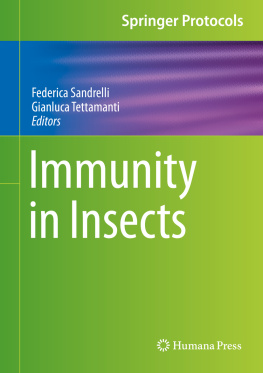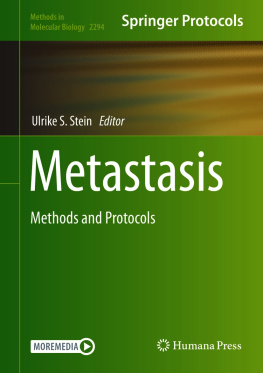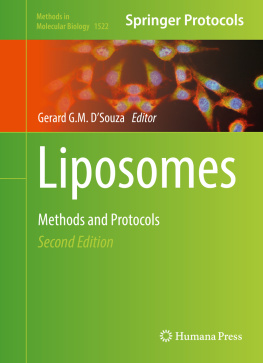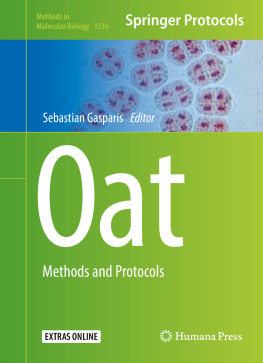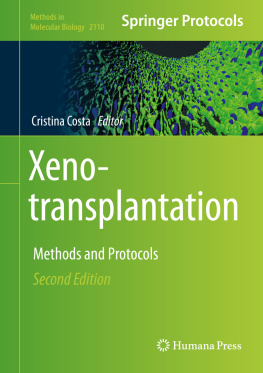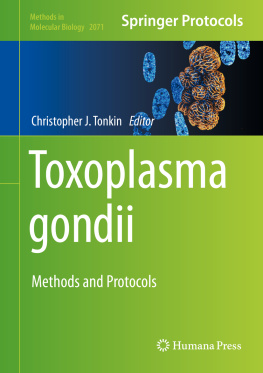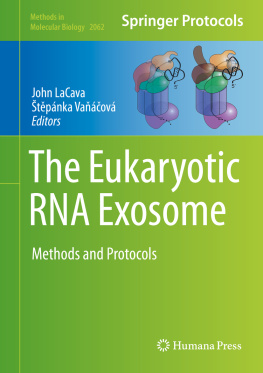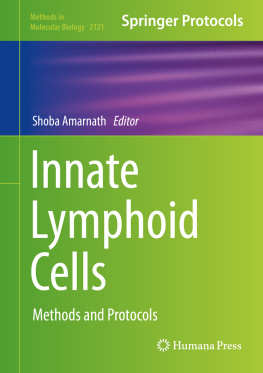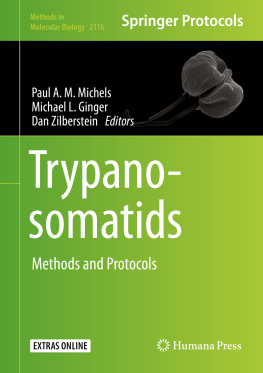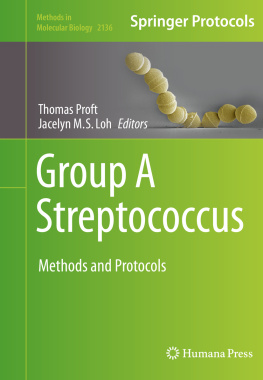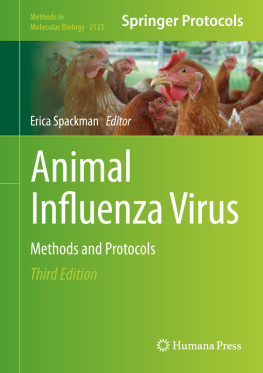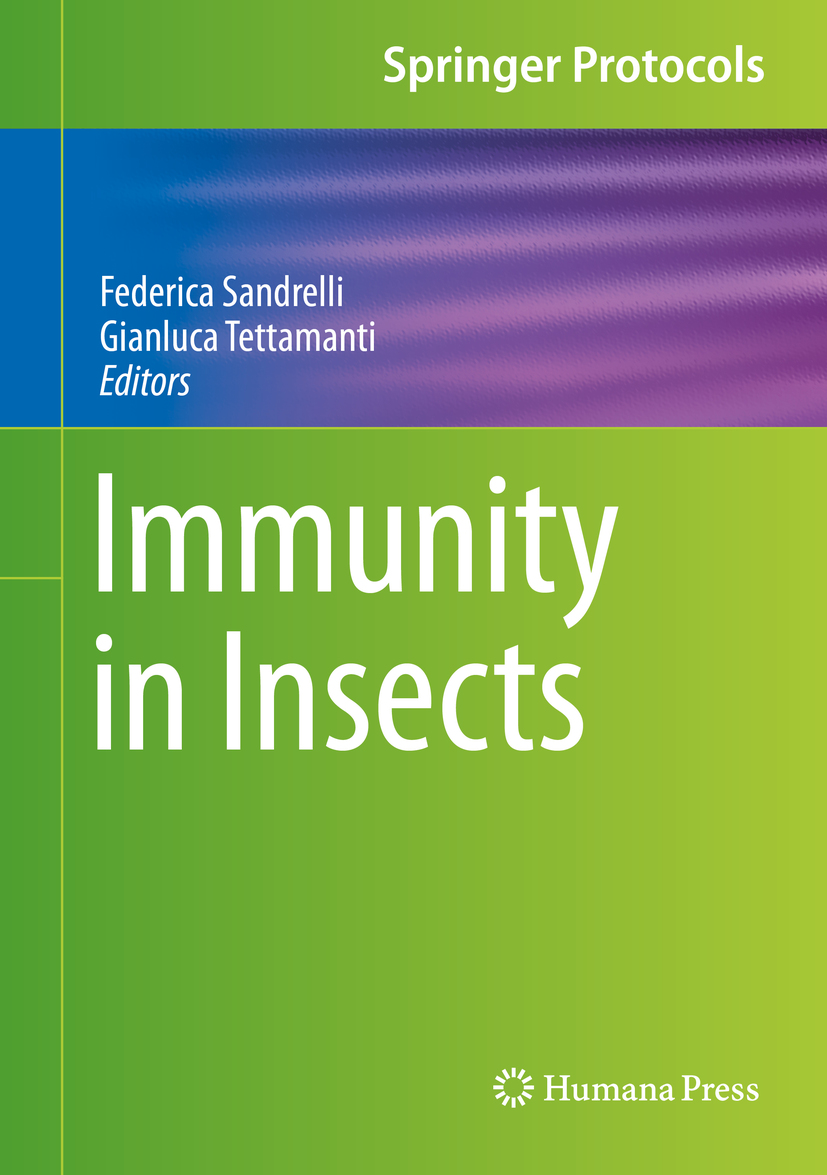Springer Protocols Handbooks
For further volumes: http://www.springer.com/series/8623
Springer Protocols Handbooks collects a diverse range of step-by-step laboratory methods and protocols from across the life and biomedical sciences. Each protocol is provided in the Springer Protocol format: readily-reproducible in a step-by-step fashion. Each protocol opens with an introductory overview, a list of the materials and reagents needed to complete the experiment, and is followed by a detailed procedure supported by a helpful notes section offering tips and tricks of the trade as well as troubleshooting advice. With a focus on large comprehensive protocol collections and an international authorship, Springer Protocols Handbooks are a valuable addition to the laboratory.
Editors
Federica Sandrelli
Department of Biology, University of Padova, Padova, Italy
Gianluca Tettamanti
Department of Biotechnology and Life Sciences, University of Insubria, Varese, Italy
ISSN 1949-2448 e-ISSN 1949-2456
Springer Protocols Handbooks
ISBN 978-1-0716-0258-4 e-ISBN 978-1-0716-0259-1
https://doi.org/10.1007/978-1-0716-0259-1
Springer Science+Business Media, LLC, part of Springer Nature 2020
This work is subject to copyright. All rights are reserved by the Publisher, whether the whole or part of the material is concerned, specifically the rights of translation, reprinting, reuse of illustrations, recitation, broadcasting, reproduction on microfilms or in any other physical way, and transmission or information storage and retrieval, electronic adaptation, computer software, or by similar or dissimilar methodology now known or hereafter developed.
The use of general descriptive names, registered names, trademarks, service marks, etc. in this publication does not imply, even in the absence of a specific statement, that such names are exempt from the relevant protective laws and regulations and therefore free for general use.
The publisher, the authors, and the editors are safe to assume that the advice and information in this book are believed to be true and accurate at the date of publication. Neither the publisher nor the authors or the editors give a warranty, expressed or implied, with respect to the material contained herein or for any errors or omissions that may have been made. The publisher remains neutral with regard to jurisdictional claims in published maps and institutional affiliations.
This Humana imprint is published by the registered company Springer Science+Business Media, LLC, part of Springer Nature.
The registered company address is: 233 Spring Street, New York, NY 10013, U.S.A.
Preface
Immunity in Insectsas a field of research has been in constant expansion over the past 30 years. Indeed, a Pubmed search using insect immunity as a keyword shows that the total number of published papers on this topic almost tripling every decade. The identification of the first antimicrobial peptide Cecropin from the lepidopteranHyalophora cecropiaby Boman in 1981 is considered the seminal work, which paved the way for this research field. The later clarification of immune response regulation and activation of innate immunity in the model organismDrosophila melanogasterrepresents a fundamental milestone that led Jules Hoffmann to be awarded the Nobel prize in Physiology or Medicine in 2011. Since then the immune response in insects has become a multidisciplinary field, and currently the study of hostpathogen relationships in these animals appears fundamental in elucidating evolutionary and ecological traits, in controlling both beneficial and agriculture-pest insects, as well as in the study of insect vectors of tropical diseases. Although insects lack an adaptive immune response, their innate immune response displays remarkable homologies with that of vertebrates. Additionally, insects often have short life cycles and produce large numbers of individuals each generation. For these reasons, in recent years several dipteran and lepidopteran species have been recognized as cost-effective model organisms to study human microbial infections, implementing the 3R principle of animal use. Insects also represent a significant source of antimicrobial peptides (AMPs), molecules nowadays analyzed as potential alternatives to conventional antibiotics to treat infections, and also for their immunomodulatory function and anticancer activity.
This book aims at providing a methodological guide for scientists interested in different aspects of insect immunity. In the first part, Chaptersprovides protocols to monitor the effect of septic infections with human pathogens usingB. morias a model.
Federica Sandrelli
Gianluca Tettamanti
Padova, Italy Varese, Italy

